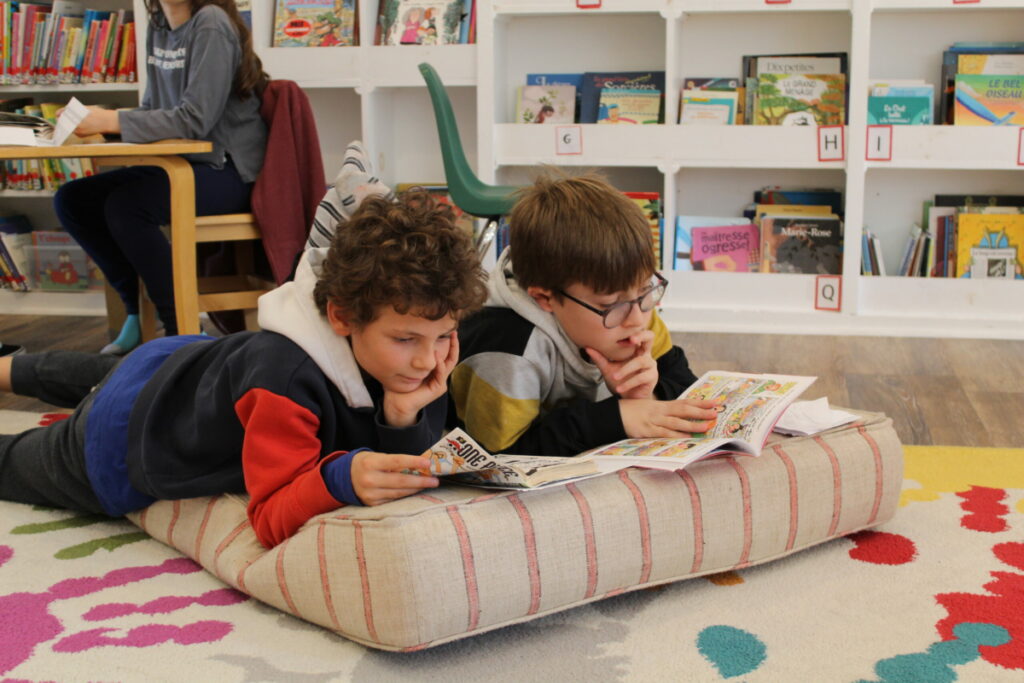If you’ve spent time with a preschooler, you know the routine. One minute, they’re happily stacking blocks; the next, they’re on the floor, wailing like a siren. Welcome to early childhood, where frustration is frequent, sharing feels impossible, and the word “no” is the ultimate betrayal.
But here’s the thing: tantrums aren’t just chaos. They are communication. And with the right tools, we can teach kids to express their emotions without melting down.
Table of contents
Why Preschoolers Struggle with Emotions
Picture this: You’re trying to assemble IKEA furniture with no instructions. The screws don’t fit, the shelves are wobbly, and the clock is ticking. Frustrating, right?
Now imagine you’re three years old, and that’s how everything feels: putting on socks, waiting for your turn, asking for help. Preschoolers don’t throw tantrums because they wish to. They throw tantrums because they’re overwhelmed. Their prefrontal cortex, which regulates emotions and impulse control, is still developing, making it harder for them to manage frustration and sensory overload.

What are some of the triggers that cause preschoolers to throw tantrums?
- Limited Vocabulary: They feel frustration, anger, or sadness but may not have the words to express them.
- Impulse Control: Self-regulation is a skill that takes time to develop, so they react quickly without thinking.
- Overstimulation: Loud noises, bright lights, or too many choices can overwhelm them.
- Desire for Independence: They want to do things on their own but are sometimes rushed while they still need help, leading to frustration.
- Routine Changes: Unexpected shifts in daily routines can cause anxiety or meltdowns.
- Modeling & Experience: They are still learning by watching adults and practicing emotional skills.
Adults have decades of experience handling emotions. Preschoolers? They’re still figuring it out.
The Toolkit: How to Teach Emotional Regulation (Without Just Saying “Calm Down”)
Telling a child to “calm down” in the middle of a meltdown is like telling a hurricane to stop spinning. It’s useless. What actually works? Teaching them how.
In our Preschool and Kindergarten classrooms, teachers help children build an emotional vocabulary and navigate emotions through structured conversations, expressive play, and even music.
1. Teaching the Language of Feelings
Before kids can manage emotions, they have to name them. Teachers introduce words for emotions during morning meetings, classroom discussions and activities, bilingual lessons and closing meetings, because emotions aren’t separate from learning; they’re part of it. A child who knows the words for “frustrated,” “excited,” or “disappointed” is a child who can say, “I feel mad” instead of throwing a toy.
One of our tools? The Photo Project.
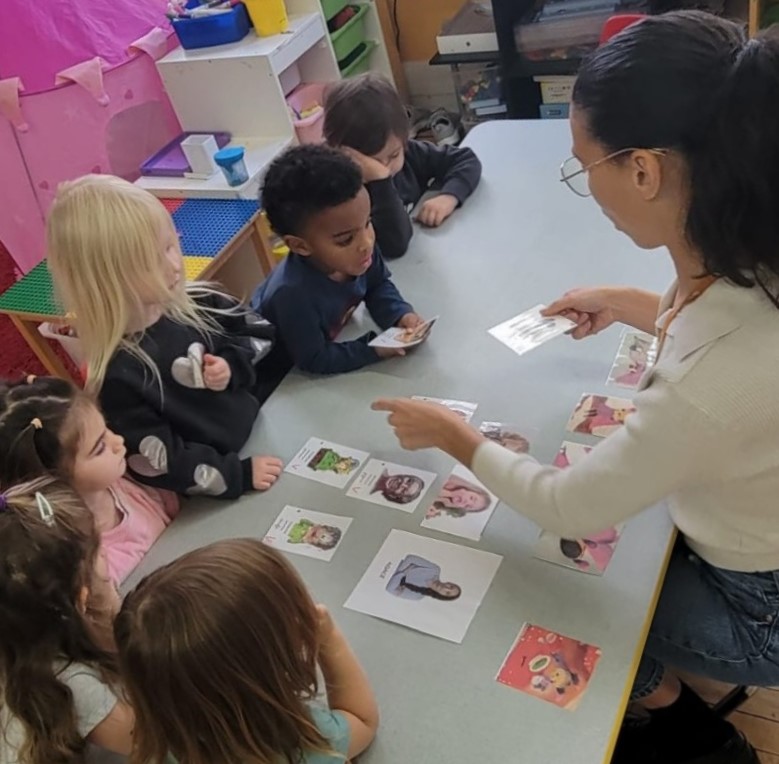
- Kids mimic different emotions, happy, mad, surprised, and see their own expressions in print.
- This helps them recognize emotions in themselves and others, which is key to developing empathy.
Art also plays a role. How do you draw what anger feels like? What color is happiness? Music, too, teachers play different styles and ask, “How does this song make you feel?” These simple activities help kids connect emotions to experiences.
2. The Oasis: A Safe Space to Reset
When emotions get overwhelming, kids need a break, not a punishment. Enter the Oasis, a dedicated calm-down space in our preschool and kindergarten classrooms.
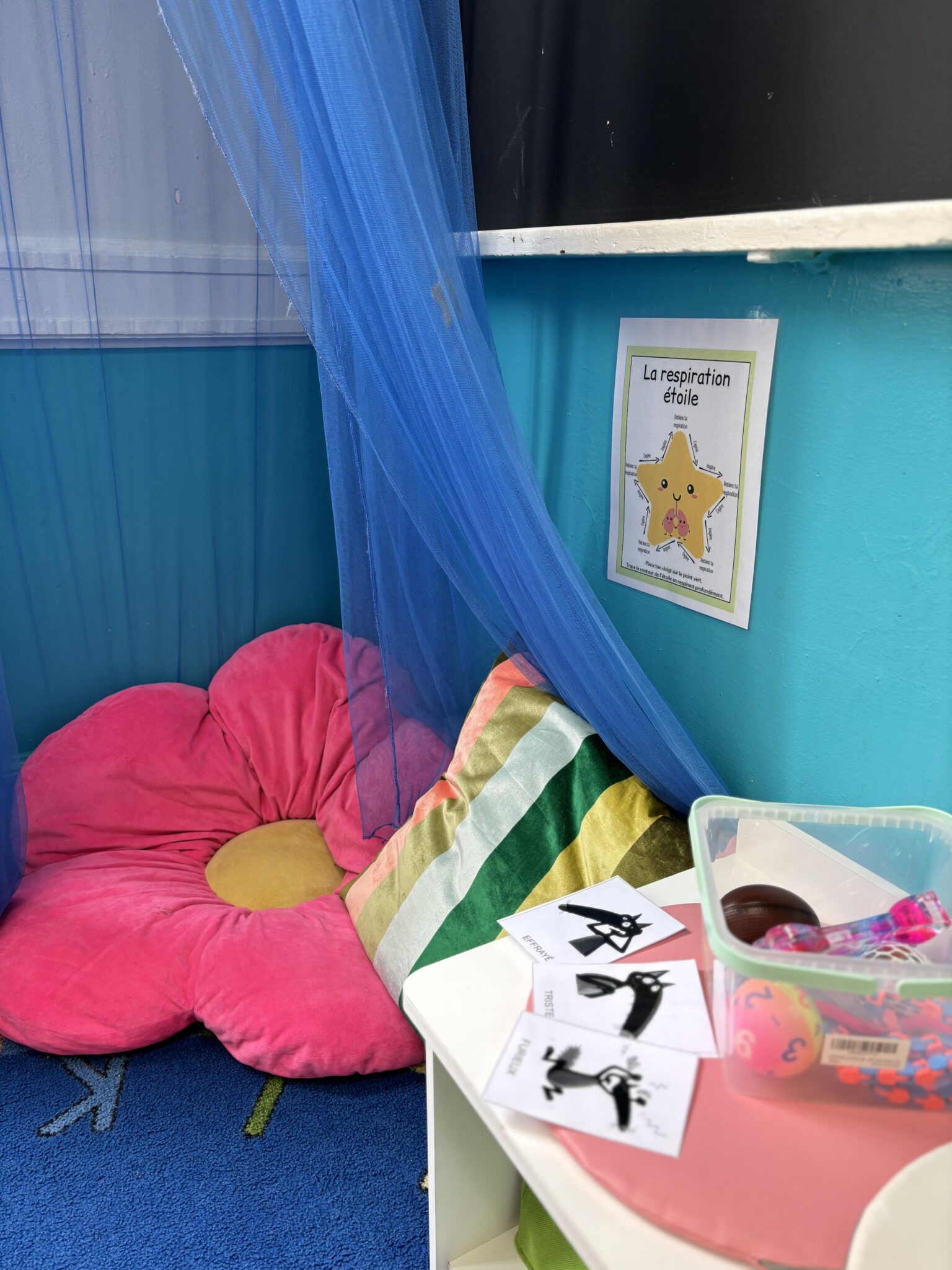
What’s inside?
- Sensory bottles: Watching glitter settle calms breathing and emotions.
- Stress balls & fidgets: Helps release excess energy.
- Plush toys & books: Provides comfort and security.
- Solution cards for preschool: Give kids options like deep breaths or asking for a hug.
How does it work?
A child can ask to go, or a teacher might suggest it if they notice rising frustration. Once inside, the goal isn’t to “snap out of it” but to self-regulate in a safe way. Instead of waiting for an adult to solve their problem, kids learn to calm themselves down.
The key? Clear rules. The Oasis isn’t a place to play or avoid tasks. It’s a tool, just like deep breathing or counting to ten.
3. The Turtle Technique: A Simple Way to Pause and Reset
For those moments when a meltdown is about to hit, teachers model self-regulation in real-time.
The Turtle Technique:
Step 1: Stop – When a big feeling comes up, pause. Like a turtle pulling into its shell.
Step 2: Breathe – Deep, slow breaths help reset the brain.
Step 3: Think – What’s happening? What can I do?
Step 4: Act – Now that the storm has passed, make a choice.
Instead of punishing outbursts, teachers guide kids through them. They model it in real time, pausing, breathing, thinking until the children start doing it themselves.
Over time, self-regulation stops being something teachers enforce. It becomes something kids own.
4. Five-Finger Breathing: A Simple Way to Find Calm
When emotions start to feel overwhelming, our teachers use Five-Finger Breathing, which gives our students a physical and visual way to slow down and regain control. Students hold out one hand and use the index finger of the other to trace up and down each finger. Inhale while tracing up, exhale while tracing down. The movement keeps their focus, the rhythm steadies their breath, and by the time they reach their pinky, their body has already begun to relax. It’s a simple, tangible way to turn a big feeling into a manageable one.
Stopping a Tantrum Before It Starts
Preventing emotional explosions is easier than cleaning them up. Some of our best proactive strategies to teach children how to manage frustrations at home:
8 Tips for Preventing Toddler Tantrums
1. Build Emotional Vocabulary
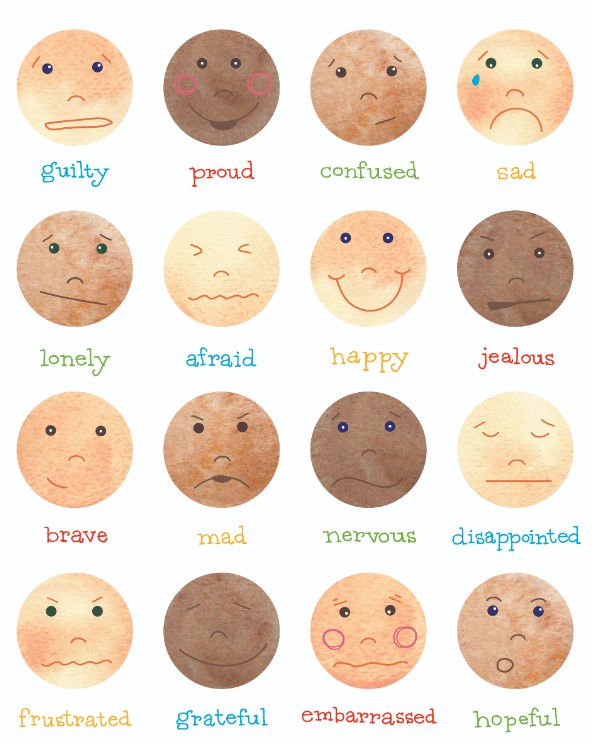
The more words kids have for feelings, the less they rely on screaming. Teaching them to name emotions helps prevent escalation.
2. Acknowledge Feelings with Positive Language
Continue reinforcing SEL at home by giving your child the space to express emotions, validating their feelings, and avoiding dismissive phrases like “Don’t cry, you’re not a baby.” Instead, encourage them to name their emotions and talk through them.
3. Establish Predictable Routines
Knowing what’s next gives children a sense of control and security.
4. Teach Calming Techniques

Practice breathing exercises like the Turtle Technique or Five-Fingers, reinforcing self-regulation skills.
5. Create Your Own “Oasis”, Calm-Down Space at Home
Even the most well-adjusted adults need a minute alone sometimes. A designated calm-down space, think soft pillows, a few sensory objects, maybe a favorite book, offers a child a physical retreat when they feel overwhelmed.
6. Redirect Attention
Shifting focus with an unrelated question or new activity helps break fixation on distress during a tantrum.
7. Encourage Problem-Solving
Help kids navigate conflicts by giving them concrete strategies. You can use simple picture cards such as our “Solution Kit” or a visual guide to present solutions like:
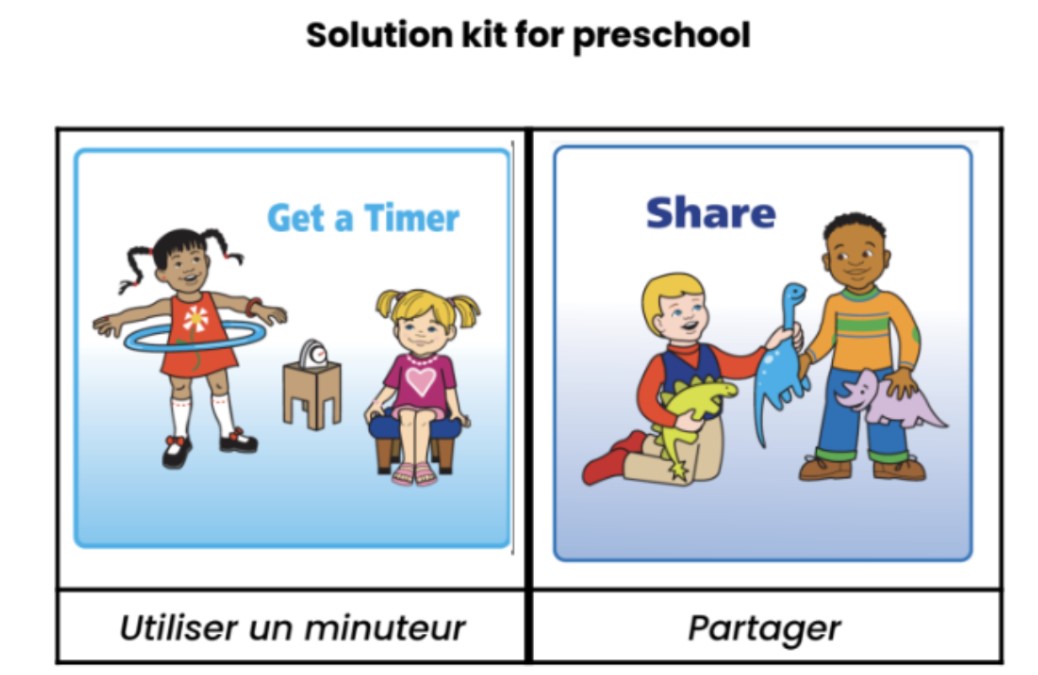
- Taking turns with a timer
- Asking politely instead of demanding
- Choosing a different activity when frustrated
8. Let Books Do Some of the Heavy Lifting
Stories help children process feelings. Some favorites:
French:
- Grosse colère (Big Anger) – Robert’s anger turns into a red monster, teaching emotional awareness.
- Le loup qui apprivoise ses émotions – A wolf navigates big emotions, modeling self-regulation.
- Aujourd’hui, je suis… – Colorful fish illustrate different feelings, making emotions easier to name.
English:
- The Color Monster – Uses colors to explain emotions visually.
- When Sophie Gets Angry—Really, Really Angry – Sophie learns to self-soothe through nature.
- How Do You Feel? – Engaging illustrations introduce a range of emotions.
The Lifelong Benefits of Emotional Intelligence
Research shows that children with strong emotional intelligence have better academic performance, healthier relationships, and improved mental well-being. A Casel study found that preschoolers with strong social-emotional skills were more likely to succeed in school and later careers. By teaching emotional regulation early, we set kids up for lifelong resilience and success.


